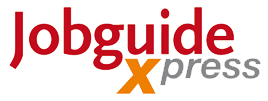Businesspeople have been worried about disruption for two decades, but the degree of actual disruption in business over the past 15 years is much lower than one might expect. PwC tracked the top 10 companies by revenue in 39 key sectors. On average, only 6 per cent of company value shifted over a full 10-year period, except for the three most volatile sectors internet software and services, IT, and biotechnology. Even there, the figure was only 10 per cent. In short, if you measure disruption by the market share gain or loss in the dominant companies in each sector, most industries have not yet been affected, write Leslie H. Moeller, Nick Hudson, Martina Sangin from PwC and Strategy&.
But, and that is a big but: The coming disruption will be different and will indeed impact on most businesses. Technologies such as artificial intelligence, cloud computing, online interface design, the Internet of Things, Industry 4.0, cyber-warfare, robotics, and data analytics will advance and amplify one another’s impact. Products and processes will routinely learn from their surroundings; markets will converge. “As electric power did, the new wave of technological advance is expected to alter a wide array of business practices, in nearly every sector, and in both business-to-business and business-to-consumer firms”, say the consultants. Their conclusion: the time to act is now. Once a tipping point is reached, it may take just months until the old business models are no longer sustainable. Once customers see how easy and beneficial it will be for them to switch to streaming tv and movies, or using their smartphone as a camera, people shift suddenly, and so does the industry. From there, it may take just months until the old business models are no longer sustainable.
To respond effectively to this type of disruption, a company must also reinvent itself, moving from one business model to another. And here is why:
Nearly every major disruption lowers prices dramatically. The personal computer is a classic example; it brought to a desktop computer power that had previously cost hundreds of thousands of dollars. Customers become deeply loyal if they feel they can trust a company’s low-price commitment; if the company loses their trust by letting prices drift upward, it will lose its value proposition. Amazon has on occasion cut prices on goods from third-party sellers, while still paying them the same amount per item, to keep its value-price reputation intact. Digital technology enables price cuts because, when applied strategically and innovatively, it reduces operational costs in a continuous way. For example, 3D printing has cut prototyping costs considerably in R&D, and appears likely to do the same for inventory costs related to storing components.
Disruptive business models generally find a new approach to meeting customer demand, one that adds convenience or provides value. Because most people are reluctant to change their habits, a true disruption will often take a fairly long time, even after early adopters express their enthusiasm. The new system must be not just desired, but trusted.
Digital technology allows companies to do more with less assets, or to find opportunities that others didn’t see. This drives scale, and scale drives profitability. Employee time can be used more productively with flexible hours, job-sharing arrangements, and remote-work opportunities – which are easier to arrange en masse with digital tracking. Ride-sharing services combine several underused assets, including the cars, the drivers’ skill, and the time that drivers would otherwise spend seeking fares and managing billing procedures. Making better use of assets may require new approaches to regulations and governance structures that incumbent companies have internalized, and that affect how they operate. Regulations are often designed to protect established assets; finding permissible ways to circumvent them gives the new disruptive business model a chance to grow. By the time the regulators have caught up to it, as with ride-sharing services, the disruptive model is often too popular to supplant.
Read more onwww.strategy-business.com

